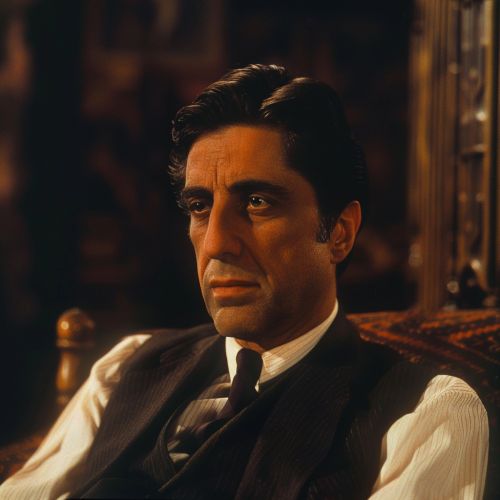The Godfather Part II
Plot Overview
The Godfather Part II is a 1974 American crime film directed by Francis Ford Coppola. It is both a sequel and a prequel to The Godfather (1972), continuing the story of the Corleone family. The film interweaves two narratives: one follows Michael Corleone (played by Al Pacino) as he consolidates his power as the new Don of the Corleone crime family in the late 1950s, and the other depicts the early life of his father, Vito Corleone (played by Robert De Niro), from his childhood in Sicily to the founding of the Corleone crime family in New York City.
Production
Development
The development of The Godfather Part II began shortly after the success of the first film. Francis Ford Coppola initially hesitated to direct the sequel but eventually agreed under the condition that he would have greater creative control. The screenplay was co-written by Coppola and Mario Puzo, the author of the original Godfather novel. The narrative structure, which alternates between two timelines, was a significant departure from traditional storytelling and required meticulous planning and execution.
Casting
The casting of the film was crucial to its success. Al Pacino reprised his role as Michael Corleone, delivering a performance that many critics consider one of the finest in cinematic history. Robert De Niro was cast as the young Vito Corleone, a role that required him to learn Sicilian Italian. The film also featured performances by Diane Keaton, Robert Duvall, John Cazale, and Talia Shire.


Themes
Power and Corruption
The Godfather Part II delves deeply into the themes of power and corruption. Michael Corleone's journey is marked by his transformation from a reluctant family outsider to a ruthless mafia boss. The film explores how power can corrupt even the most well-intentioned individuals, leading to moral decay and the destruction of personal relationships.
Family and Loyalty
The film also examines the complex dynamics of family and loyalty. The Corleone family's internal struggles and betrayals are central to the narrative. Vito Corleone's rise to power is depicted as being driven by a desire to provide for his family, while Michael's actions are often justified as being in the family's best interest, despite the devastating consequences.
Cinematography and Music
Cinematography
The cinematography of The Godfather Part II was handled by Gordon Willis, whose use of shadow and light became iconic. The film's visual style is characterized by its dark, moody lighting, which enhances the themes of secrecy and moral ambiguity. The contrasting settings of 1950s America and early 20th-century Sicily are depicted with meticulous attention to detail.
Music
The film's score, composed by Nino Rota, builds on the themes established in the first film. The music plays a crucial role in setting the tone and enhancing the emotional impact of the narrative. Rota's use of leitmotifs helps to connect the two timelines, creating a cohesive auditory experience.
Critical Reception
The Godfather Part II received widespread critical acclaim upon its release. It was praised for its ambitious narrative structure, complex characters, and thematic depth. The film won six Academy Awards, including Best Picture, Best Director for Coppola, and Best Supporting Actor for De Niro. It is often cited as one of the greatest films ever made and has had a lasting impact on the crime genre.
Legacy
The Godfather Part II has left an indelible mark on popular culture and filmmaking. Its influence can be seen in numerous films and television series that explore themes of crime, power, and family. The film's innovative narrative structure has been studied and emulated by filmmakers and scholars alike.
